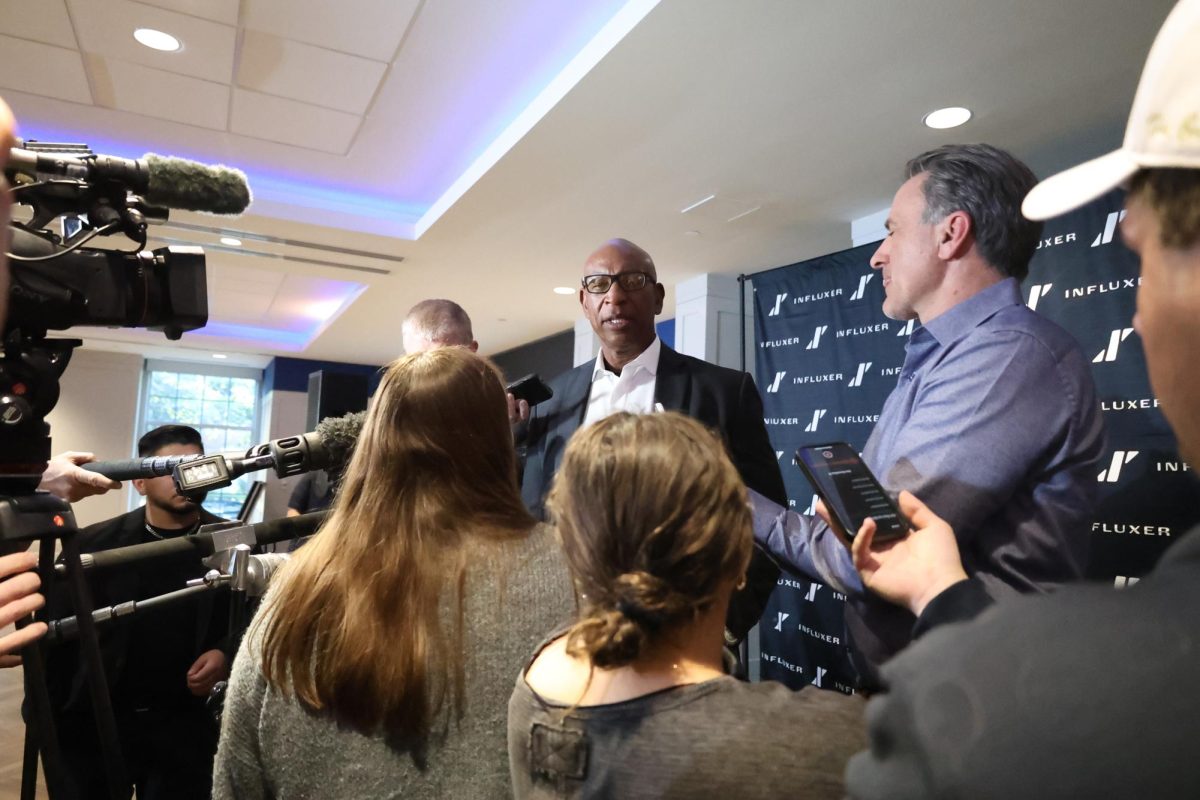
Hannibal Lecter wreaks psychological havoc
Who can name the first movie that stars the blood thirsty, delectably delightful Dr. Hannibal Lecter? If your response is The Silence of the Lambs, you are wrong.
Anthony Hopkins has rightfully earned this response associated with his role as a forensic psychiatrist with an appetite for others. Few people realize that Hopkins is the second actor to play Lecter.
In 1986 Michael Mann directed Manhunter, the prequel to The Silence of the Lambs, which starred Brian Cox as the mysterious Lecter. This film was the first of three adaptations to each of Thomas Harris’ novels.
Manhunter was based on the novel Red Dragon. This is when the small lightbulb inside your head is should light up.
This weekend’s release of Red Dragon is actually a remake of a movie that was itself based on a novel.
Hollywood wants Hopkins to play the role in all three parts of the story, and the motto in L.A. is “you can always get what you want.”
Apart from Hopkins, the powers that be wanted an ensemble of exquisite talent on-screen, and they got it.
In terms of graphic violence and all-out gore, there is a return to the psychological rooted terror that permeates throughout Harris’ novels.
As much as Hannibal seemed to push the envelope with its amount of gore, it still lacked the high-wire suspense of The Silence of the Lambs.
Rather than arguing which of the films is worthy of the gold, let’s just say that Red Dragon, as a precursor to Hopkins’ first portrayal of the nightmarish Dr. Lecter, succeeds on all levels of world-class entertainment.
Edward Norton plays a reluctant detective, Will Graham, who teams up with Harvey Keitel. Together they search for the “Tooth Fairy,” a serial killer, played by Ralph Fiennes, who’s responsible for slaying two families.
In The Silence of the Lambs, there is much more to the villain than just rage and violent passion. He strikes only during a full moon and uses shreds of glass from broken mirrors to leave his imprint on the victims.
Also, as before, the film doesn’t hide the killer’s identity, so the conflict goes beyond searching for who is responsible and turns into who is next.
Like any film with a detective and a perpetrator, Red Dragon incorporates a tremendous amount of audience participation with the story as it unfolds.
Unravelling the mystery of the when, where and why can be much more entertaining as a narrative device than just trying to figure out whodunnit.
A few scenes take us to the crime scene with Norton and it isn’t until later that he pieces everything together.
What’s fascinating about the screenwriting is that the audience learns of the evidence just as the detectives do.
So later in the film when Lecter condescends Graham, “you looked but didn’t see,” Graham retraces his steps and recalls the important element at the crime scene he missed. The audience realizes what it, too, overlooked at the crime scene.
The most convincing scene occurs when the detectives are listening to an audio recording of one of the deaths. When the audience “sees” the murder occur, there are parts edited out, but this isn’t to appease the weak stomachs in the theater.
Here the audience realizes the atrocity of having that specific part of the body dismembered.
Herein lies a perfect example of psychological terror – without seeing anything, the fright builds as the torturous and desperate cries echo throughout your mind and you can only imagine what is happening to the victim.
For the rare pool of intellectuals who both saw Manhunter and read Red Dragon, you might not be too excited to experience the story a third time, but Hollywood doesn’t give Americans that much credit.
Who watches movies from the ’80s and, gimme a break, nobody reads anymore.
Those of you that have no idea what took place before Clarice Starling hesitantly walked down that grungy hallway to Dr. Lecter’s cage fall into this unenlightened group of individuals.
It’s OK, you’re in the majority. Fortunately, Red Dragon targets that majority. Seriously, do you think someone who drops $10 on a ticket and pays $8 on a value meal for popcorn and a soft drink reads that often?
Rest assured the amount of detail in the plot never becomes too overwhelming, but at the same time presents a great challenge directed at our desire to predict an outcome.
No matter how perceptive, not one person in the theater will be able to predict the film’s final scene.








